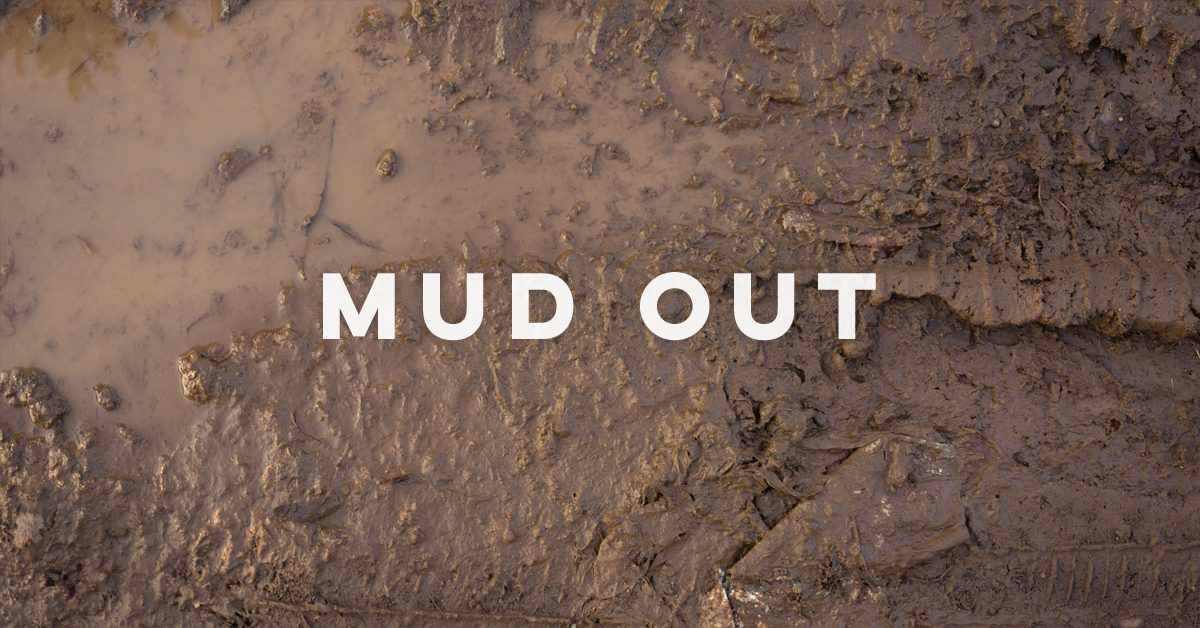The removal of wet debris from a flooded home is called mud-out because everything flooded is saturated with muddy water. The objective is to get the house cleared of all wet debris to discourage the growth of mold and to allow the structure to dry out as quickly as possible so reconstruction can begin. The following sequence of actions is suggested for your consideration:
- Look for hazards such as broken gas lines, structural damage and damaged electric systems. Other potential hazards may include contamination by chemical spills and overflowing of sewage systems. Watch for snakes and insects that may be found in unexpected places.
- Be aware of personal health and physical limitations. People with respiratory or heart problems should approach mud-out work with great caution. Furthermore, flood conditions bring increased risk of tetanus and hepatitis. Wear protective clothing such as boots, coveralls, hardhat, gloves and facemask. A fiber face respirator with N-95 rating is normally adequate for dust and molds, but not for gas or chemical fumes.
- Open all doors and windows and use fans to help circulate air through the house. Try to prevent any additional damage to the home. If the roof has suffered damage, temporary plastic roof covering may be needed. Remember, the home can normally be restored to its previous or better condition.
- Prevent health hazards by removing perishable foods and any chemicals or medicine to safe areas where animals or children will not get to it.
- If the flood water was high enough to get the walls and insulation wet:
- Remove all damaged furniture and wet debris from the house. Separate it on the curb by type, as appliances, furniture, food, chemicals and dry wall (sheetrock). Put insulation and miscellaneous items in plastic bags. Please be aware that many of your things can be saved if properly cleaned and restored.
- Remove the carpets and pads. These can be cut into manageable pieces with a box knife for safe removal. Some carpet cleaning companies can clean and restore carpets but the wet carpet pad has to be replaced.
- Remove the baseboard, window and door trim where the dry wall and insulation is wet and must be taken out. Drill 1” holes in the bottom of the wall between each stud to get air circulation.
- The dry wall and insulation should normally be removed about one foot above the high water level. Moisture Meters can be used to check the condition of the dry wall and insulation.
- Remove any wet items from fixtures or cabinets. Open all doors to cabinets. If the water level was only several inches, drill a 1” hole in the bottom of each cabinet so an air flow can me maintained. Leave permanent fixtures and cabinets for repair or removal by professional craftsmen. Dry wall and insulation behind or on the opposite wall of a fixture should be removed to allow the dry wall behind the fixture to dry.
- If the flood water only reached the floor level but did not get the dry-wall and insulation wet you may only need to roll the carpet and remove the carpet pad, as some carpet cleaners can clean and dry the carpet and replace the pad. Adequate ventilation will be needed to remove excessive moisture. See sub-item 3.
- When an area is drying, do not rewet it with a hose or power washer. Let the area dry out and then sweep up the remaining debris. Spray with a fungicide such as Shockwave. If it is not available, a mixture of one half cup of bleach per one gallon of water may be applied where the site is still wet and mold is growing, this may not affect black mold.
- Allow the house to dry out for several weeks before putting in new dry wall and insulation. The time required for adequate drying will depend on temperature, humidity and how well ventilated the structure is.









